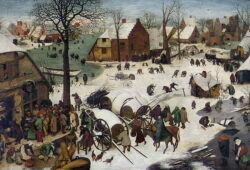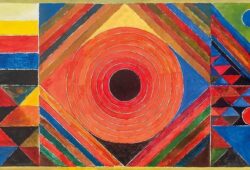Wassily Kandinsky: Pioneering the Abstract Art Movement
 Posted On
Posted On
Wassily Kandinsky, a Russian-born artist, is widely recognized as one of the trailblazers of abstract art. Born on December 16, 1866, in Moscow, Kandinsky’s artistic journey spanned decades and left an indelible mark on the world of modern art. Through his innovative use of color, form, and abstraction, Kandinsky challenged traditional artistic norms and reshaped the way we perceive and appreciate art.
Kandinsky’s early life was marked by his academic pursuits. He studied law and economics at the University of Moscow and even worked as a professor of law. However, his passion for art eventually led him to abandon his legal career and pursue painting full-time. He moved to Munich in 1896 to study art at the Academy of Fine Arts, marking the beginning of his transformation into a groundbreaking artist.
One of Kandinsky’s most significant contributions to the art world was his role in the development of abstract art. He believed that art should not merely replicate the visible world but should evoke emotions and sensations independently of any representational forms. This philosophy was revolutionary and laid the foundation for the abstract art movement.
In 1910, Kandinsky published a seminal book titled “Concerning the Spiritual in Art,” in which he articulated his theories on art and spirituality. He argued that colors, shapes, and lines possessed inherent spiritual qualities that could communicate directly with the viewer’s soul. This spiritual dimension of art became a central theme in Kandinsky’s work, as he sought to convey profound emotions and ideas through his abstract compositions.
Kandinsky’s painting “Composition VII,” created in 1913, is a prime example of his abstract style. In this masterpiece, he used bold colors, dynamic shapes, and intricate patterns to create a visually stimulating experience. The painting is a symphony of color and form, inviting viewers to explore their own interpretations and emotional responses. It is a testament to Kandinsky’s belief in the transcendent power of art.
Kandinsky’s artistic evolution was influenced by various movements and artists. He was associated with the Blue Rider group, a collective of avant-garde artists, including Franz Marc and August Macke. Together, they explored the spiritual and symbolic aspects of art, and their work played a crucial role in advancing abstract expressionism.
The outbreak of World War I forced Kandinsky to return to Russia, where he continued to develop his abstract style. He became involved in the Russian avant-garde movement and played a significant role in the development of non-objective art. His compositions during this period, such as “Black Square” (1915), distilled his abstract ideas to their essence, representing a departure from representational art.
Kandinsky’s return to Germany after the war coincided with a period of intense creativity. He taught at the Bauhaus School of Art and Design in Weimar and later in Dessau, where he further refined his theories on the relationship between art and spirituality. His teaching had a profound impact on future generations of artists, and the Bauhaus became a hub for artistic experimentation.
The artist’s later works continued to evolve, with a greater emphasis on geometric forms and a more controlled use of color. Yet, his commitment to abstraction and the spiritual essence of art remained unwavering.



